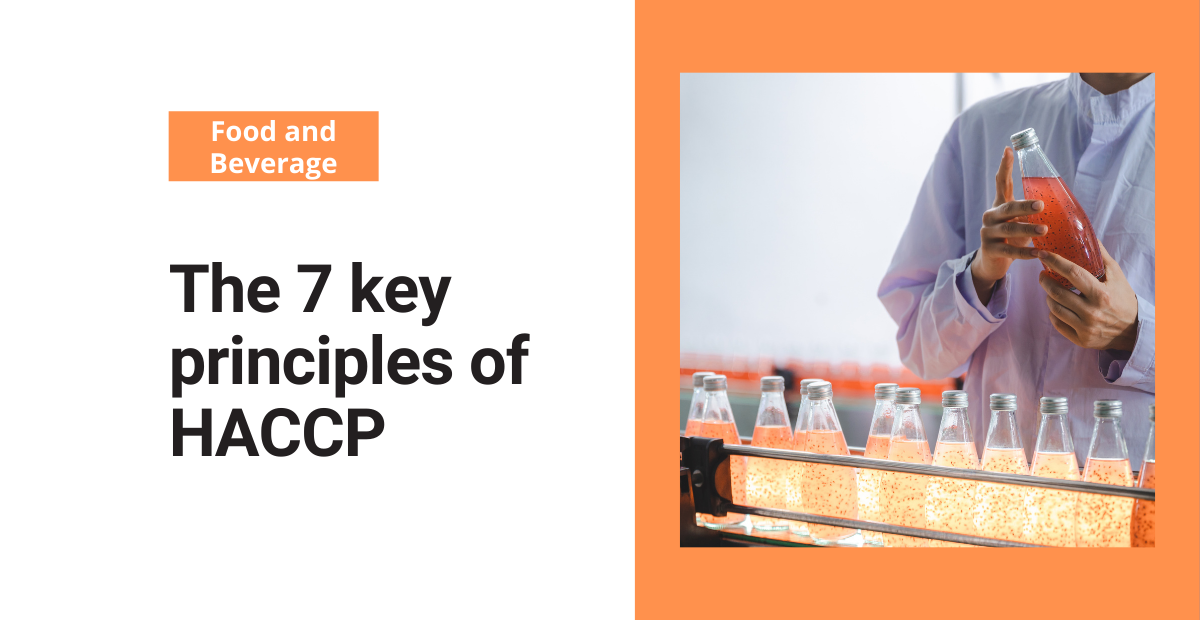HACCP is a proactive methodology that is based on identifying and evaluating hazards in a food operation and then developing preventive controls to ensure these hazards are eliminated or reduced to acceptable levels as much as possible.
It engages employees at all levels, especially those who handle products on a regular basis, in forming relationships with customers with the highest level of professionalism.
The 7 key principles of HACCP are:
- Conducting a hazard analysis
- Identifying critical control points
- Establishing critical limits
- Monitoring CCP
- Implementing corrective actions
- Verification
- Documentation
Conducting a hazard analysis
The first of the key HACCP principles is performing a detailed hazard analysis. This is so you can identify hazards and reduce the safety risks within your processes. Food safety hazards fall under the 3 categories below.
Biological hazards
Biological hazards include microbiological hazards such as bacteria, viruses, parasites, pathogens, etc.
Chemical hazards
Chemical hazards are those that may potentially cause injuries or illnesses. This may arise from added chemicals, contaminants, allergens, or from packaging materials.
Physical hazards
Physical hazards can be the result of several factors. From poor food handling practices to extraneous or foreign objects entering the product.
To implement an effective HACCP plan, you must identify all steps in your production process where these hazards could occur.
Identifying critical control points
Accurately identifying critical control points is crucial for an effective HACCP plan. CCPs are any part of the process where you can apply control to eliminate or prevent a hazard. These steps can include cooking or handling the food, suppliers, storage processes, production processes, cleaning, transportation of food, etc.
Establishing critical limits
Critical limits are the maximum or minimum values beyond which unacceptable levels of risk may occur if you don’t control them with preventive measures. Establishing these limits is important for maintaining the safety of food.
Monitoring CCP
You must monitor parameters for each CCP to ensure that you don’t exceed critical limits while also meeting food safety objectives. Monitoring requires the flow of real-time data through visual observation or instrumentation, using thermometers, calibrated pH, or Aw meters, etc.
In-line monitoring: This type of monitoring occurs during a process.
Off-line monitoring: This occurs outside of a process, where you can take a sample for testing.
Frequency of monitoring must be established based on the type of observation being conducted, or whether it is in-line or off-line.
Implementing corrective actions
Corrective action is necessary when:
- The process exceeds a critical limit;
- An actual process value deviates from the expected value; or
- There is a failure in preventive measures
You can apply corrective action in one of two ways:
• Preventive — Preventing the recurrence of a deviation by implementing new food safety controls.
Example: If cleaning procedures were not followed properly, then preventive corrective action would include training staff on proper cleaning procedures.
• Corrective — Restoring an unsafe condition so that it does not pose an imminent health risk to consumers or employees.
Example: Consider that you have raw chicken stored above cooked chicken in a refrigerated display case. Corrective action would involve rearranging the display case so that raw chicken products are below cooked ones that are at a lower temperature range.
Verification
Aside from monitoring, every CCP must go through a verification process. This process includes the information of who is involved in each process and establishing that they are following the necessary procedures accurately. It also requires each instrument in the process to be calibrated and maintained. The verification process must also confirm that monitoring is working accurately.
Documentation
The last of the key principles of HACCP is documenting everything. This includes all activities associated with monitoring, controlling, and verifying CCPs. You must have them all in writing in case of any audits, incidents, or inspections, so the evidence is available to prove what occurred in the production stage.




